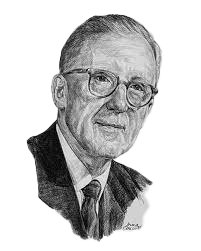Fire Together, Wire Together' Principle: Unveiling the Foundations of Neuroplasticity
Donald Hebb, a Canadian psychologist, made an indelible mark on the field of neuroscience with his groundbreaking work on synaptic plasticity. His most notable contribution, known as Hebbian learning, laid the foundation for understanding how our brains adapt and change over time.
At the core of Hebb's theory is the famous phrase "Cells that fire together wire together." This simple yet profound concept encapsulates the essence of synaptic plasticity—the ability of our brain's neural connections to strengthen or weaken based on experience. But how does this principle relate to the transformative nature of neuroplasticity?
Neuroplasticity refers to the brain's capacity to reorganize itself by forming new neural connections throughout life. This phenomenon is not static; rather, it's an ongoing process influenced by various factors, including learning, experience, and environmental stimuli. Hebb's principle becomes particularly relevant when exploring the intricate dynamics of neuroplasticity.
Imagine the brain as a vast network of interconnected neurons, each communicating with others through synapses. When two neurons are activated simultaneously, Hebb proposed that the connection between them strengthens. This strengthening is achieved through the enhancement of synaptic efficacy, making the transmission of signals more efficient.
Enter the contemporary twist on Hebb's principle coined as "Fire together, wire together" by neuroscientist Carla Shatz and later popularized by neuroscientist Carla J. Shatz. Burton's expansion of Hebb's idea underscores the idea that neurons that consistently fire in conjunction strengthen their connections, contributing to the shaping of neural circuits.
This principle of simultaneous activation leading to synaptic reinforcement is not only fundamental to understanding memory formation but also underscores the malleability of our brains. Whether through intentional learning, skill acquisition, or exposure to new environments, our neural networks are in a constant state of flux, adapting to the patterns of activity they experience.
The synergy between Hebb's pioneering work and Burton's vivid expression sheds light on the intricate dance of neurons in our brain. The "Fire Together, Wire Together" principle beautifully encapsulates the essence of neuroplasticity, highlighting the remarkable ability of our brains to reshape and rewire based on the patterns of activity we engage in. Understanding these principles not only deepens our appreciation for the complexity of the human brain but also opens doors to innovative approaches in education, rehabilitation, and cognitive enhancement.

